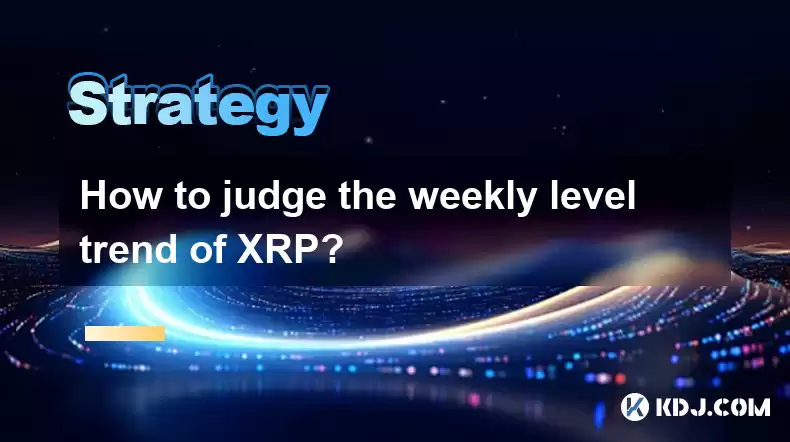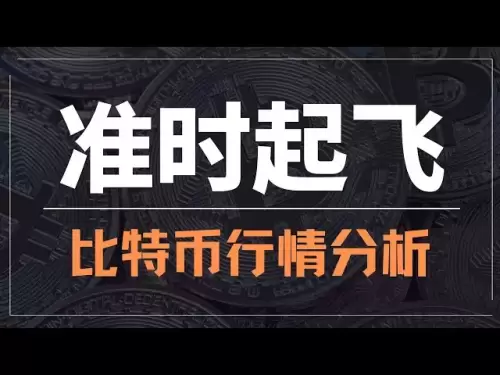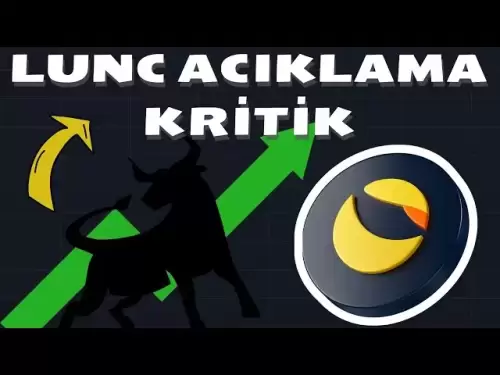-
 Bitcoin
Bitcoin $116500
1.98% -
 Ethereum
Ethereum $3851
6.94% -
 XRP
XRP $3.070
3.95% -
 Tether USDt
Tether USDt $1.000
0.04% -
 BNB
BNB $774.7
1.77% -
 Solana
Solana $171.9
4.66% -
 USDC
USDC $1.000
0.01% -
 Dogecoin
Dogecoin $0.2142
6.71% -
 TRON
TRON $0.3387
1.28% -
 Cardano
Cardano $0.7678
5.61% -
 Sui
Sui $3.747
9.68% -
 Hyperliquid
Hyperliquid $39.16
3.69% -
 Stellar
Stellar $0.4157
6.28% -
 Chainlink
Chainlink $17.93
9.21% -
 Bitcoin Cash
Bitcoin Cash $578.1
3.28% -
 Hedera
Hedera $0.2531
5.60% -
 Ethena USDe
Ethena USDe $1.001
-0.02% -
 Avalanche
Avalanche $22.75
3.82% -
 Litecoin
Litecoin $120.1
3.76% -
 UNUS SED LEO
UNUS SED LEO $8.953
-0.37% -
 Toncoin
Toncoin $3.323
4.76% -
 Shiba Inu
Shiba Inu $0.00001266
4.22% -
 Uniswap
Uniswap $10.13
7.08% -
 Polkadot
Polkadot $3.786
5.09% -
 Dai
Dai $1.000
-0.02% -
 Monero
Monero $273.0
-5.03% -
 Bitget Token
Bitget Token $4.391
1.62% -
 Cronos
Cronos $0.1480
5.45% -
 Pepe
Pepe $0.00001091
5.80% -
 Ethena
Ethena $0.6314
11.93%
How to judge the weekly level trend of XRP?
To judge XRP's weekly trend, analyze its performance against major cryptocurrencies, use technical tools like moving averages and RSI, and consider Ripple's partnerships and regulatory news.
Apr 20, 2025 at 04:21 am

How to Judge the Weekly Level Trend of XRP?
Analyzing the weekly level trend of XRP involves a thorough examination of various technical and fundamental factors. By understanding these elements, traders and investors can make more informed decisions about their XRP holdings. This article will guide you through the key aspects to consider when evaluating the weekly trend of XRP.
Understanding XRP and Its Market Position
Before delving into the technical analysis, it's important to understand what XRP is and its position in the cryptocurrency market. XRP, developed by Ripple Labs, aims to facilitate cross-border payments and serve as a bridge currency for financial institutions. Its market position is influenced by both its utility and the broader crypto market sentiment.
To judge the weekly level trend of XRP, start by reviewing its performance relative to other major cryptocurrencies like Bitcoin and Ethereum. This comparative analysis can provide insights into whether XRP is outperforming or underperforming its peers, which is a crucial indicator of its short-term and long-term trends.
Technical Analysis Tools for XRP Weekly Trends
Technical analysis is a cornerstone of trend analysis in the cryptocurrency market. For XRP, several tools can be used to assess its weekly level trend:
Moving Averages: Use the 50-week and 200-week moving averages to identify long-term trends. If the 50-week moving average crosses above the 200-week moving average, it's known as a "golden cross," indicating a bullish trend. Conversely, a "death cross" occurs when the 50-week moving average falls below the 200-week moving average, signaling a bearish trend.
Relative Strength Index (RSI): The RSI measures the speed and change of price movements. An RSI above 70 indicates that XRP might be overbought, suggesting a potential price correction. An RSI below 30 suggests that XRP might be oversold, indicating a potential price rebound.
Volume Analysis: High trading volumes can confirm the strength of a trend. If XRP's price is increasing on high volume, it suggests strong buying interest and a potential continuation of the uptrend. Conversely, if the price is falling on high volume, it indicates strong selling pressure and a potential continuation of the downtrend.
Fundamental Analysis of XRP Weekly Trends
While technical analysis focuses on price movements, fundamental analysis looks at the underlying factors that could influence XRP's value. Key fundamental factors to consider include:
Ripple's Partnerships and Developments: Announcements of new partnerships or developments from Ripple Labs can significantly impact XRP's price. For instance, if Ripple announces a new partnership with a major financial institution, it could lead to increased demand for XRP.
Regulatory News: Regulatory developments, especially in the United States, can have a profound effect on XRP. Positive regulatory news can boost investor confidence, while negative news can lead to sell-offs.
Market Sentiment: The overall sentiment in the cryptocurrency market can influence XRP's weekly trend. Positive sentiment can drive prices up, while negative sentiment can lead to price declines.
Combining Technical and Fundamental Analysis
To get a comprehensive view of XRP's weekly level trend, it's essential to combine both technical and fundamental analysis. Here's how you can do it:
Start with Technical Analysis: Begin by analyzing XRP's price charts using the tools mentioned earlier. Identify any significant patterns or signals that suggest a trend.
Incorporate Fundamental Analysis: Once you have a technical perspective, consider the fundamental factors that could influence XRP's price. Look for any recent news or developments that could impact its value.
Cross-Reference Findings: Compare your technical analysis findings with the fundamental factors. If both analyses suggest the same trend, it strengthens your confidence in the trend. If they contradict each other, it may indicate a more complex market situation that requires further investigation.
Using Trading Platforms and Tools
To effectively judge the weekly level trend of XRP, you'll need access to reliable trading platforms and tools. Here's how to set up and use these tools:
Choose a Trading Platform: Select a reputable cryptocurrency exchange that offers XRP trading pairs. Popular options include Binance, Coinbase, and Kraken.
Set Up Technical Indicators: Once you have an account, navigate to the XRP trading chart. Add the 50-week and 200-week moving averages, RSI, and volume indicators to your chart. Most platforms allow you to customize these settings easily.
Monitor Fundamental News: Use cryptocurrency news websites and social media platforms to stay updated on the latest developments related to XRP and Ripple Labs. Websites like CoinDesk and CryptoSlate are good resources for this.
Analyze and Adjust: Regularly review your technical and fundamental analysis to adjust your trading strategy as needed. The cryptocurrency market is highly volatile, and staying informed is crucial for making timely decisions.
Practical Example of Analyzing XRP's Weekly Trend
Let's walk through a practical example of how to analyze XRP's weekly trend using the tools and methods discussed:
Technical Analysis: You notice that XRP's 50-week moving average has recently crossed above its 200-week moving average, indicating a potential bullish trend. The RSI is at 65, suggesting that XRP is not yet overbought. The trading volume has been increasing over the past few weeks, confirming the strength of the uptrend.
Fundamental Analysis: You learn that Ripple Labs has just announced a new partnership with a major bank, which could increase the demand for XRP. Additionally, there have been no negative regulatory developments recently, which supports a positive market sentiment.
Combining Analysis: Both your technical and fundamental analyses suggest a bullish trend for XRP. This alignment strengthens your confidence in the trend, and you decide to take a long position on XRP.
Frequently Asked Questions
Q: How often should I review the weekly trend of XRP?
A: It's advisable to review the weekly trend of XRP at least once a week, preferably on the same day each week to maintain consistency. However, given the volatility of the cryptocurrency market, you may want to check more frequently if there are significant news developments or price movements.
Q: Can I use daily charts instead of weekly charts for trend analysis?
A: While daily charts can provide more granular data, weekly charts are better suited for identifying long-term trends. Daily charts can be useful for short-term trading, but for a comprehensive view of XRP's trend, weekly charts are more effective.
Q: What should I do if my technical and fundamental analyses contradict each other?
A: If your technical and fundamental analyses contradict each other, it's important to take a cautious approach. Consider waiting for more data or additional developments that could clarify the situation. You might also want to reduce your position size or use stop-loss orders to manage risk.
Q: Are there any specific tools or software recommended for analyzing XRP's weekly trend?
A: Several tools and software can be useful for analyzing XRP's weekly trend. TradingView is a popular platform that offers advanced charting tools and indicators. Additionally, platforms like Coinigy and CryptoWatch provide comprehensive data and analysis features that can help you make informed decisions.
Disclaimer:info@kdj.com
The information provided is not trading advice. kdj.com does not assume any responsibility for any investments made based on the information provided in this article. Cryptocurrencies are highly volatile and it is highly recommended that you invest with caution after thorough research!
If you believe that the content used on this website infringes your copyright, please contact us immediately (info@kdj.com) and we will delete it promptly.
- WiMi, Quantum Computing, and AR Tech: Navigating the Future Today
- 2025-08-07 22:30:12
- BitcoinFi: From Building Blocks to Usable Products – Staking, Lending, and Beyond
- 2025-08-07 22:30:12
- Dogecoin, Crypto, and the 25x Gains Dream: What's Next?
- 2025-08-07 20:50:12
- Dogecoin: A Second Chance for the OG Meme Coin?
- 2025-08-07 20:50:12
- BlockchainFX: Your Choice for Long-Term Crypto Gains?
- 2025-08-07 21:10:12
- Pepe Dollar's Presale Mania: Memecoin Staking and the Crypto Revolution
- 2025-08-07 21:10:12
Related knowledge

How to avoid common crypto investment mistakes?
Jul 13,2025 at 01:35am
Understanding the Risks of Crypto InvestmentInvesting in cryptocurrency can be highly rewarding, but it also comes with significant risks. One of the ...

What is a long-short crypto strategy?
Jul 15,2025 at 10:56am
Understanding the Basics of a Long-Short Crypto StrategyA long-short crypto strategy is an investment approach where traders simultaneously take long ...

What is a long-short crypto strategy?
Jul 11,2025 at 01:28pm
Understanding the Basics of Long-Short Crypto StrategyA long-short crypto strategy is an investment approach where traders take both long and short po...

How to use the RSI indicator for crypto?
Jul 12,2025 at 03:56pm
Understanding the RSI Indicator in Cryptocurrency TradingThe Relative Strength Index (RSI) is a momentum oscillator used to measure the speed and chan...

Is copy trading a good strategy for crypto beginners?
Jul 12,2025 at 08:28am
Understanding Copy Trading in the Cryptocurrency MarketCopy trading is a strategy where novice traders replicate the trades of experienced investors a...

How to build a crypto portfolio with $1000?
Jul 13,2025 at 08:14pm
Understanding the Basics of Cryptocurrency InvestmentBuilding a crypto portfolio with $1000 starts with understanding the fundamentals of cryptocurren...

How to avoid common crypto investment mistakes?
Jul 13,2025 at 01:35am
Understanding the Risks of Crypto InvestmentInvesting in cryptocurrency can be highly rewarding, but it also comes with significant risks. One of the ...

What is a long-short crypto strategy?
Jul 15,2025 at 10:56am
Understanding the Basics of a Long-Short Crypto StrategyA long-short crypto strategy is an investment approach where traders simultaneously take long ...

What is a long-short crypto strategy?
Jul 11,2025 at 01:28pm
Understanding the Basics of Long-Short Crypto StrategyA long-short crypto strategy is an investment approach where traders take both long and short po...

How to use the RSI indicator for crypto?
Jul 12,2025 at 03:56pm
Understanding the RSI Indicator in Cryptocurrency TradingThe Relative Strength Index (RSI) is a momentum oscillator used to measure the speed and chan...

Is copy trading a good strategy for crypto beginners?
Jul 12,2025 at 08:28am
Understanding Copy Trading in the Cryptocurrency MarketCopy trading is a strategy where novice traders replicate the trades of experienced investors a...

How to build a crypto portfolio with $1000?
Jul 13,2025 at 08:14pm
Understanding the Basics of Cryptocurrency InvestmentBuilding a crypto portfolio with $1000 starts with understanding the fundamentals of cryptocurren...
See all articles

























































































